Persian cats are undoubtedly one of the most beautiful cat breeds in the world. But can Persian cats jump high? With their luxurious coats, sweet personalities, and cute faces, they have been a favorite among cat lovers for centuries.
This is a debatable topic that has sparked many discussions among cat enthusiasts.
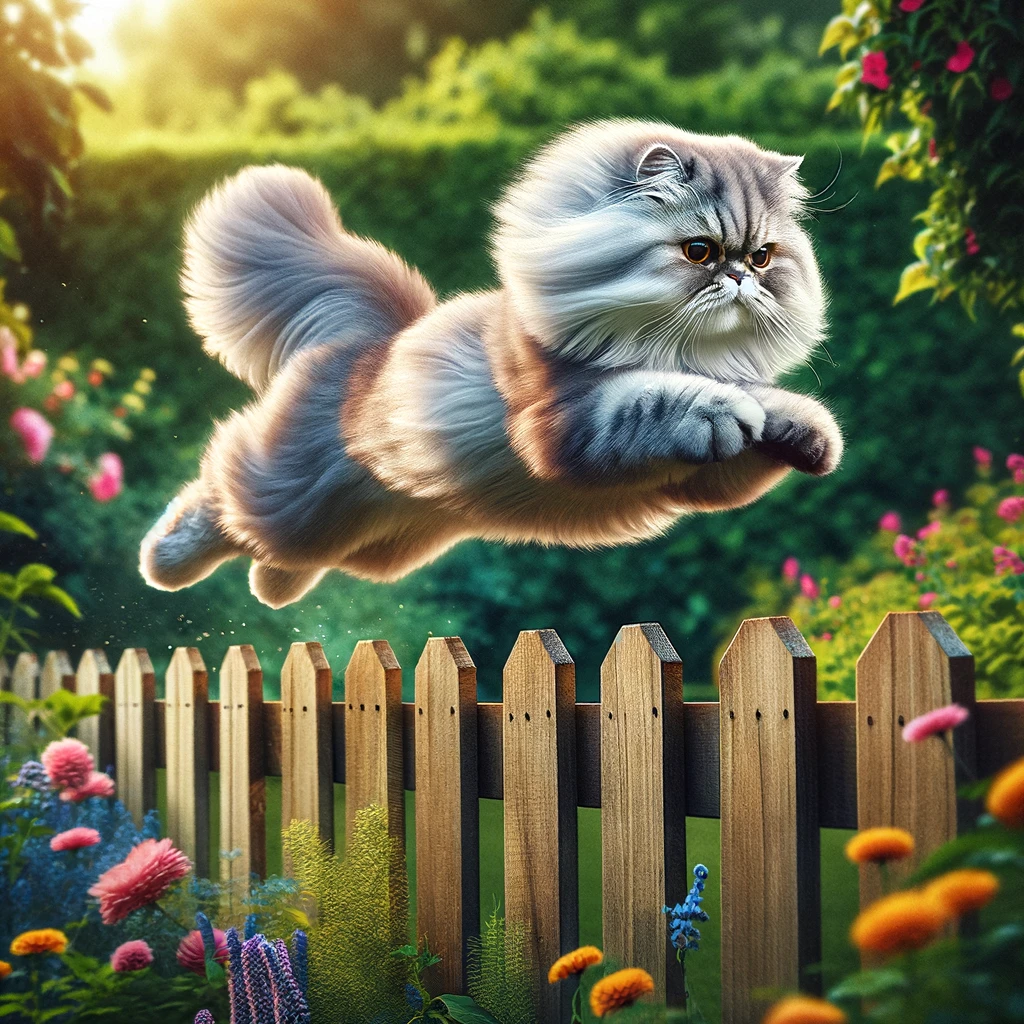
In this article, we will explore if:
- Persian cats have the ability to jump high
- Genetics play a role in their performance.
- Physical Characteristics affect the ability to jump high.
- Persian cats need to jump.
- training techniques that can help improve their jumping skills if need be.
- Breeding affects the ability of Persian cats to jump high.
Can Persian Cats Jump High? Do They Have The Ability To Jump High?
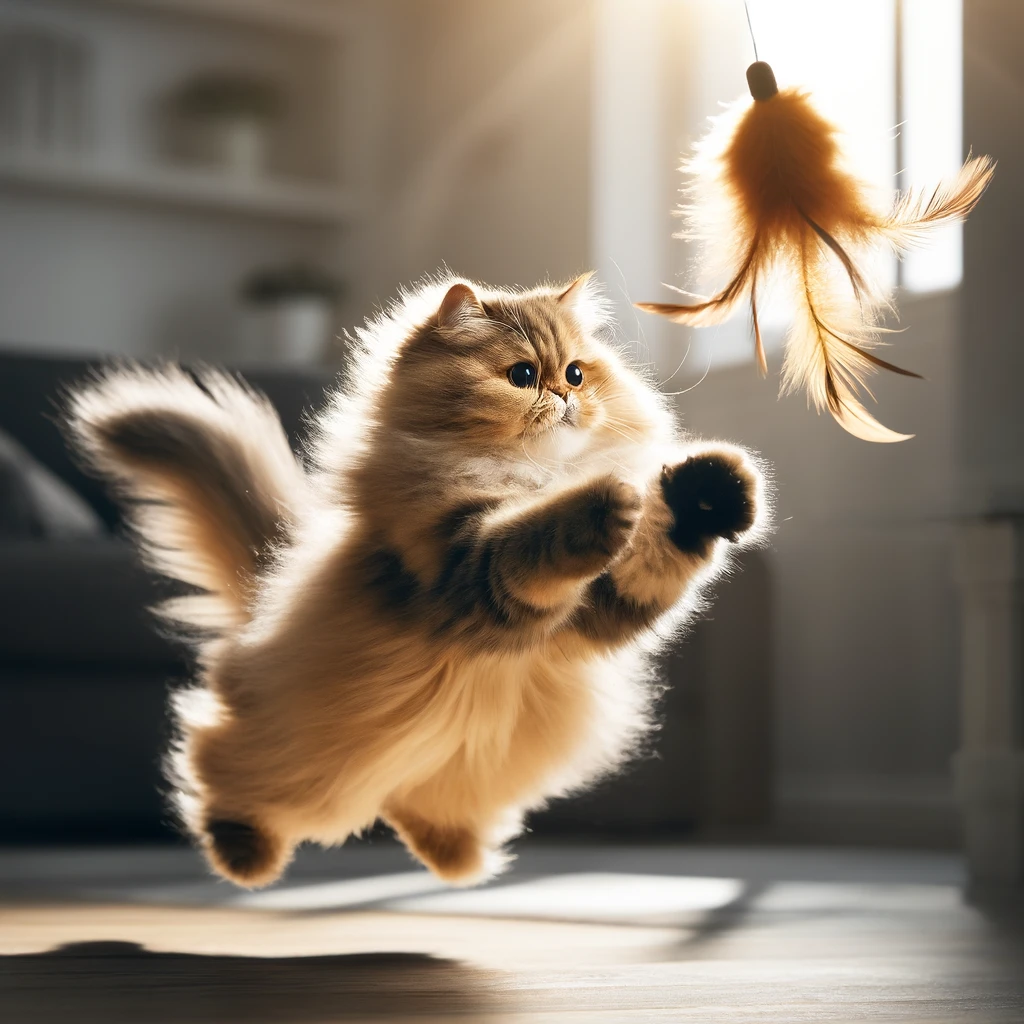
The jumping ability of Persian cats is truly remarkable. Despite their fluffy and weighty appearance, these cats can jump higher than most other cat breeds.
In fact, they can jump up to six times their body length in a single leap! This has been calculated methodically and in a scientific way.
But what makes Persian cats such great jumpers? It all comes down to their powerful hind legs and muscular bodies.
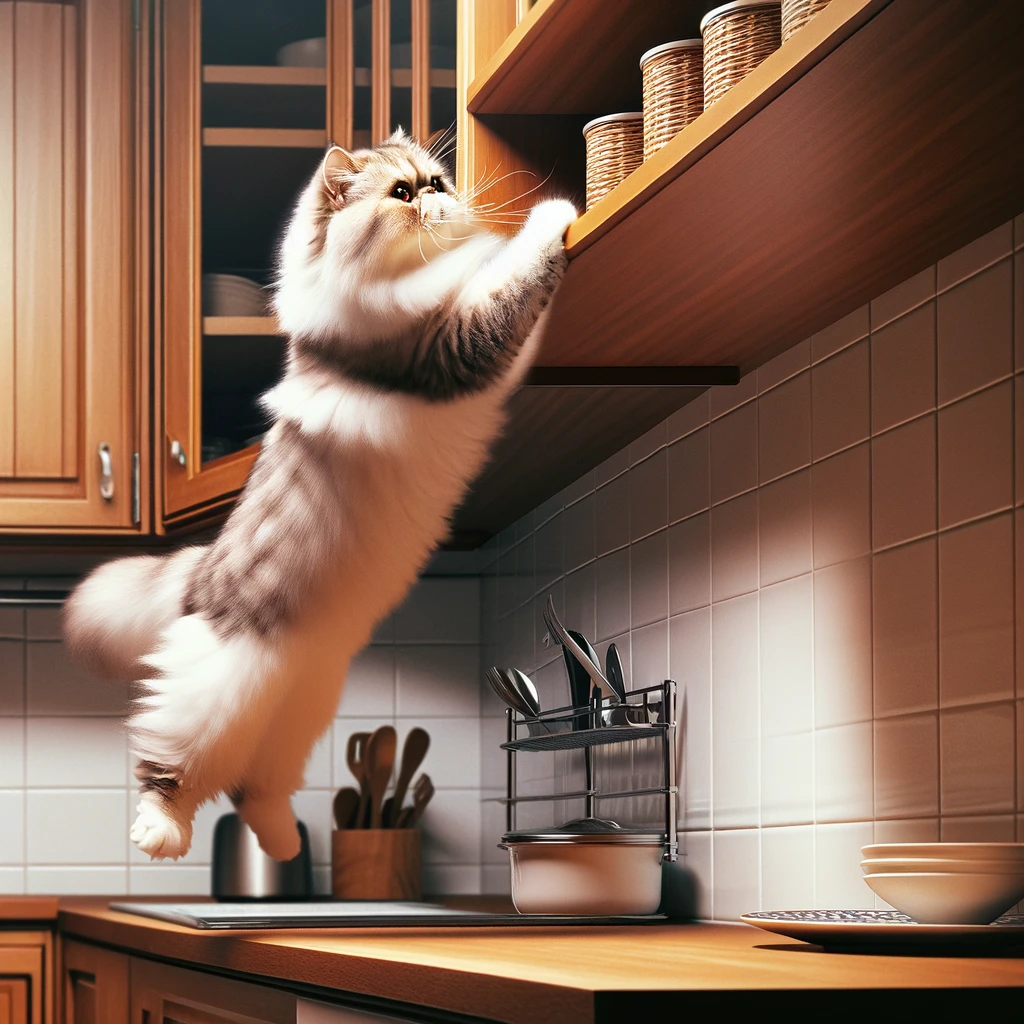
These attributes give them the strength and agility needed to make high jumps with ease. This allows them to launch themselves into the air with ease.
When it comes to jumping ability, Persian cats are often underestimated. However, this breed has proven time and time again that they are capable of jumping like many other feline breeds.
Additionally, Persian cats have a flexible spine that allows them to contort their bodies mid-jump, giving them even more height and distance.
Another factor that contributes to the jumping ability of Persian cats is their environment. This breed is known for being active and playful, which means they are constantly using their bodies in various ways.
Given the right environment, their activity helps to build up their muscles and coordination over time, allowing them to jump high in the air.
It’s important to note that while some cat breeds may be able to jump higher than others due to physical differences, each individual cat’s abilities will vary based on factors such as age, weight, and health status.
However, when it comes specifically to the jumping ability of Persian cats, it’s clear that this breed has a natural talent for jumping high.
Do Genetics Play A Role? Can Persian Cats Jump High?
Genetics plays a significant role in determining the physical characteristics of Persian cats, including their ability to jump.
Persian cats have a stocky build and short legs, which may not be ideal for jumping long distances. However, genetics also determine the muscle strength and bone density of these felines, which are crucial factors in their jumping ability.
Studies have shown that certain genes influence muscle development and function in cats. The myostatin gene is responsible for regulating muscle growth and strength in animals.
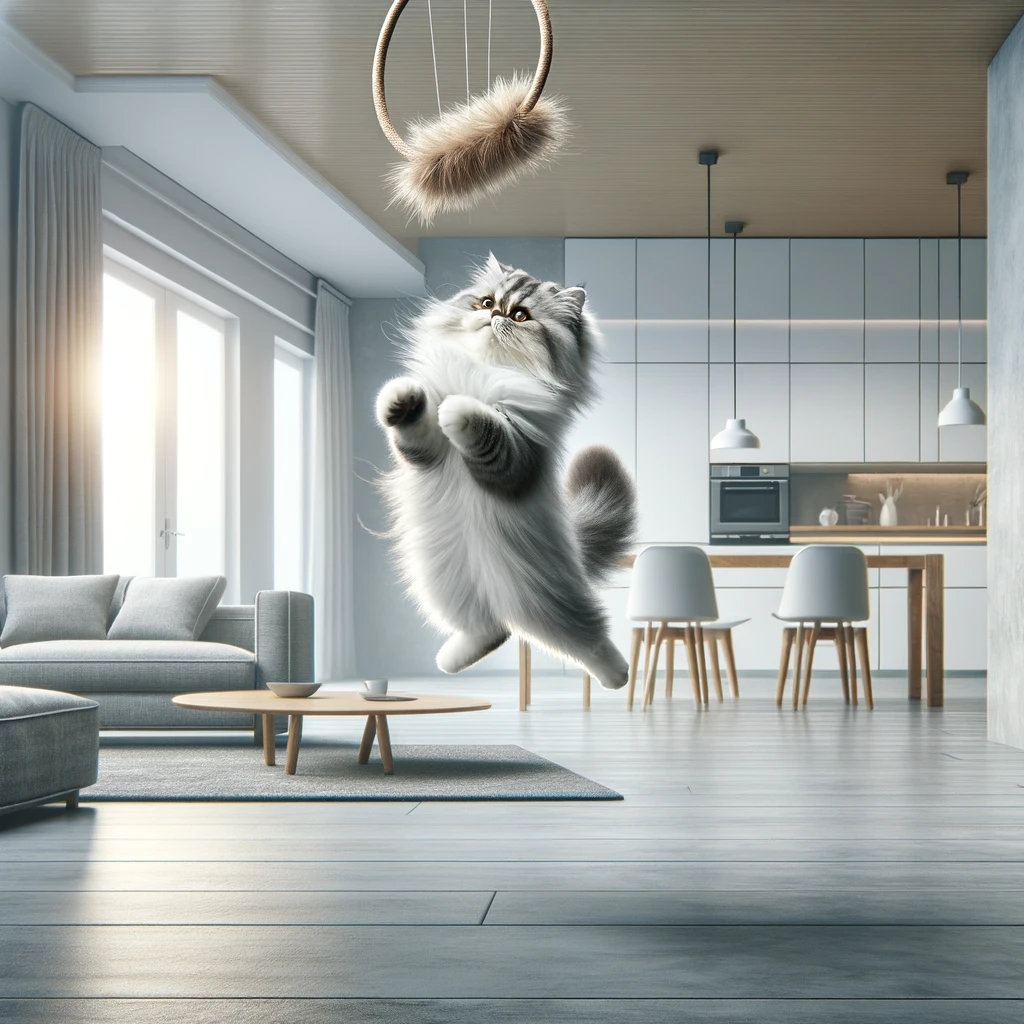
Cats with variations of this gene may have stronger muscles that enable them to jump higher than others.
Similarly, the ACTN3 gene affects fast-twitch muscle fibers, which are necessary for explosive movements like jumping.
Furthermore, there are also genes that affect bone density which can impact a cat’s ability to jump. The COL1A1 gene codes for collagen type I alpha 1 which plays an important role in bone formation and strength.
Cats with variations in this gene may have weaker bones which could limit their ability to jump high or far. It is clear that genetics play a significant role in determining a Persian cat’s jumping ability.
However, it is important to note that genetics are not the only factor at play. Environmental factors such as diet, exercise, and overall health can also impact a cat’s physical abilities.
Do The Physical Characteristics Of Persian Cats Affect Their Ability To Jump?
Persian cats are agile and possess good jumping abilities that are often underestimated.
Contrary to popular belief, Persian cats can jump high enough to reach elevated surfaces such as countertops or even the top of a refrigerator.
These felines have a muscular build that allows them to propel themselves into the air with ease.
Their strong hind legs provide them with the necessary force to jump higher than most people would expect.
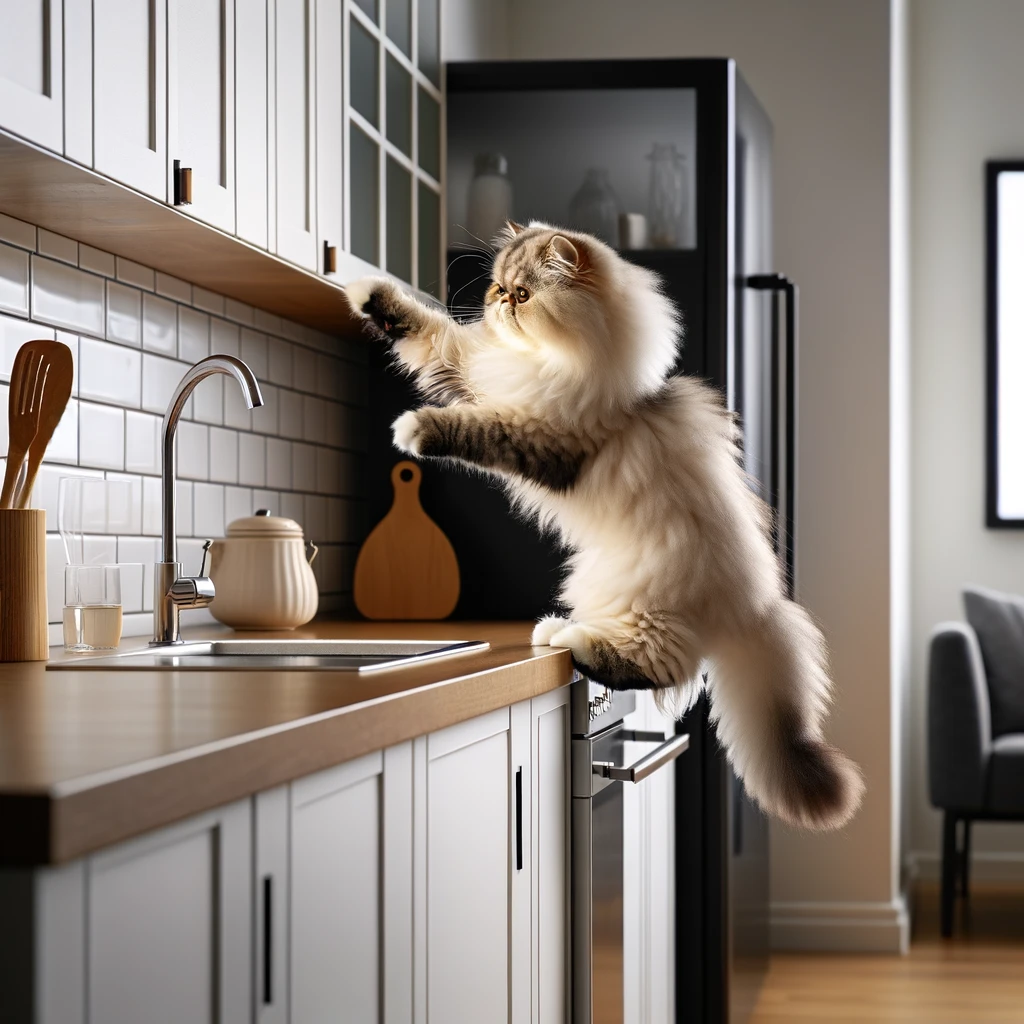
Moreover, Persian cats are highly intelligent animals that possess excellent coordination skills.
They have an innate ability to judge distances accurately and time their jumps perfectly.
This allows them to make precise leaps that take them exactly where they want to go. Furthermore, Persian cats are known for their playful nature and love of climbing.
This means they will not only jump high but also climb up vertical surfaces like curtains or furniture with ease.
The combination of these skills makes them excellent at navigating obstacles and exploring new heights.
In addition, Persian cats have been known to participate in agility courses where they showcase their jumping abilities alongside other breeds like Siamese or Bengal cats. https://www.detroitnews.com/story/news/nation/2017/02/11/cats-dogs-showing-together/97806266/
These courses require felines to jump over hurdles and through tunnels while racing against the clock. It’s no surprise that Persian cats excel in these competitions due to their impressive jumping capabilities.
It’s clear that Persians can indeed jump high despite common misconceptions about their activity level.
Their muscular build combined with flexible bodies and excellent coordination skills make them capable of reaching heights beyond what many would expect from a cat breed typically associated with lounging around all day long.
It’s essential not to underestimate these beautiful creatures as they possess remarkable abilities beyond what meets the eye!
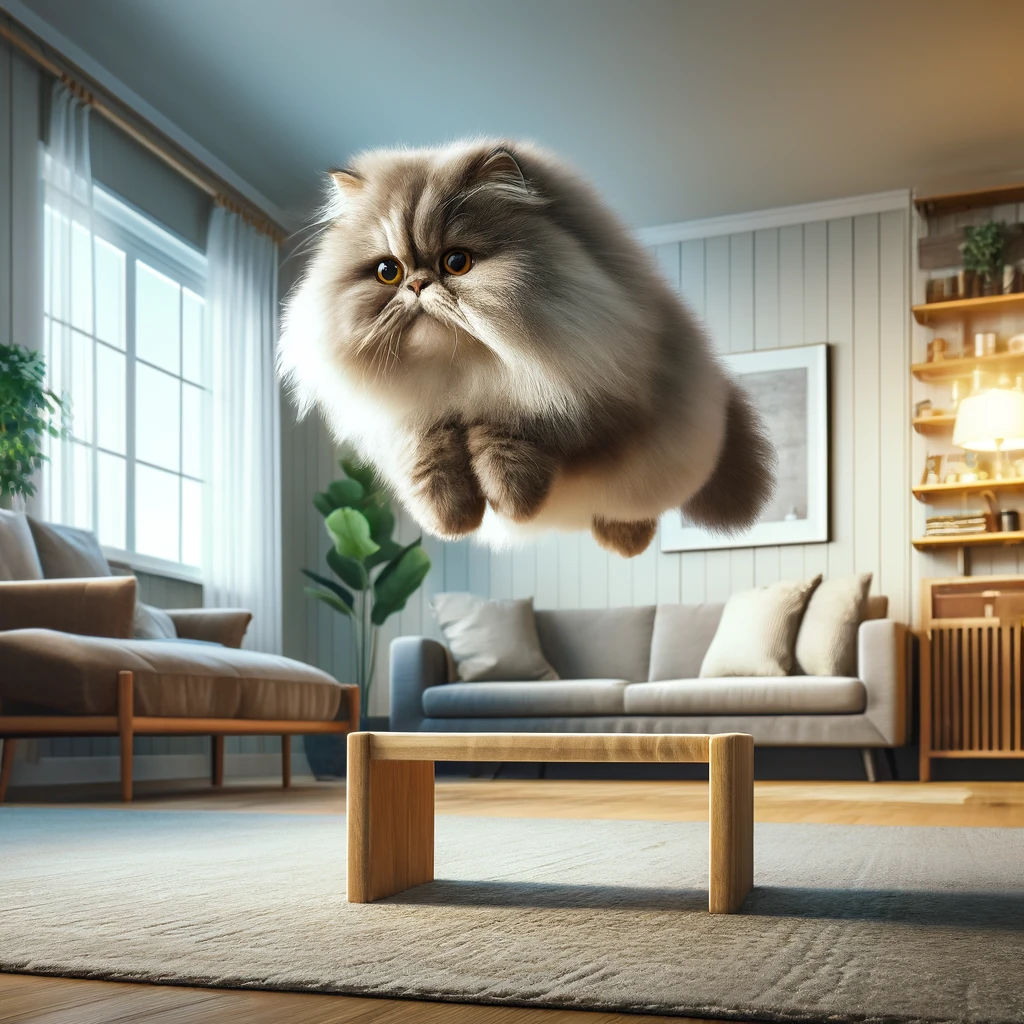
In addition to genetics, physical characteristics such as weight and age also play a role in a cat’s jumping ability.
Persian cats are known for being relatively heavy compared to other breeds, which can make it more challenging for them to jump high or far distances.
As they age, their muscles may weaken or become less flexible, further limiting their jumping abilities.
However, it’s important to note that each cat is unique and may have different strengths and weaknesses when it comes to physical activities like jumping.
Some Persian cats may surprise you with their impressive leaping skills despite their stocky build or age.
Can Training Techniques Help Persian Cats To Jump Better?
Training techniques are critical in improving the performance of Persian cats. There are several methods that can be utilized to enhance their jumping ability, and as a result, improve their overall athleticism.
One such technique is using positive reinforcement to encourage them to jump higher. This involves rewarding the cat with treats or praise every time they successfully complete a jump.
The positive association with jumping will encourage them to continue practicing and improving their skills.
Another effective training technique is utilizing obstacles to challenge the cat’s jumping ability.
By incorporating hurdles or other obstacles into their training routine, it forces them to use more of their muscles and engage in more complex movements.
This type of training not only improves their jumping ability but also strengthens other key muscles, which can improve overall agility and coordination.
In addition, utilizing toys during training sessions can also help improve a Persian cat’s jumping ability. Toys such as feather wands or laser pointers can provide mental stimulation while also encouraging the cat to move around and jump in pursuit of its target.
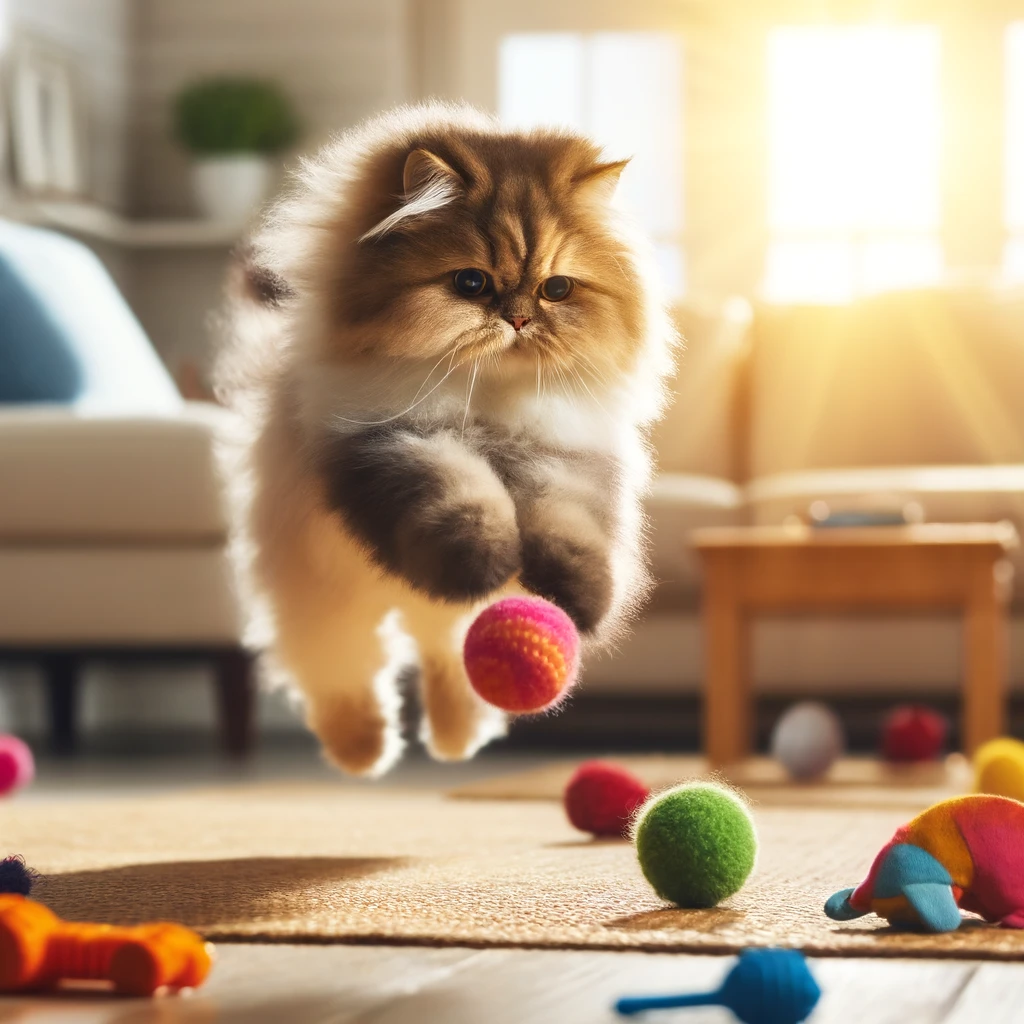
Lastly, consistency is key when it comes to training any animal, including Persian cats. A consistent routine that incorporates regular practice sessions will help ensure that your cat continues to improve its skills over time.
It’s important not to overwhelm your pet with too much too soon; instead, gradually increase difficulty levels as they become more comfortable with each new challenge.
Overall, there are many effective training techniques that can be used to improve the performance of Persian cats when it comes to jumping high.
Positive reinforcement, obstacle courses, toy playtime and consistent practice sessions all contribute towards enhancing a feline’s athleticism which ultimately leads towards better physical health for them in the long run!
Does Breeding Affect The Ability Of Persian Cats To Jump High?
After conducting research and speaking with breeders, it is clear that breeding does indeed impact a Persian cat’s ability to jump.
A better bloodline can help a Persian cat jump better, making them more agile and active. One reason why breeding impacts a Persian cat’s jumping ability is due to genetics.
Breeding allows for specific traits to be passed down from one generation to the next. If a breeder focuses on breeding cats with strong leg muscles and good balance, those traits will likely be passed down to their offspring.
On the other hand, if a breeder does not prioritize these traits in their breeding program, then it is unlikely that their cats will have strong leg muscles or good balance.
This can result in cats that struggle with jumping or are simply not interested in being active. Another factor that can impact a Persian cat’s jumping ability is health issues related to breeding practices. Inbreeding and overbreeding can lead to genetic defects such as hip dysplasia or joint problems, which can make it difficult for cats to jump or move around comfortably.
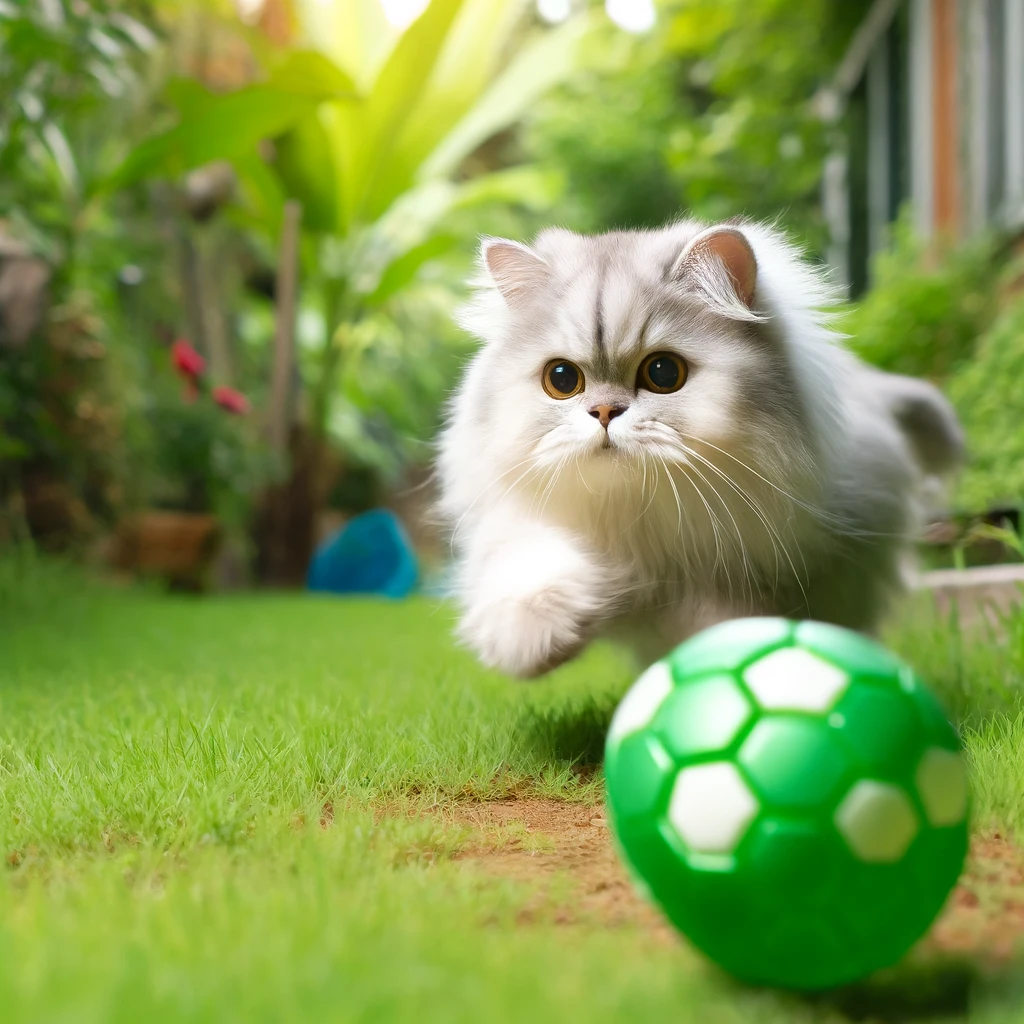
However, when breeders focus on improving the bloodline through careful selection of healthy cats with desirable traits, they can produce kittens with better overall health and physical abilities.
In addition to genetics and health issues related to breeding practices, environmental factors also play a role in a Persian cat’s jumping ability.
For example, if a kitten grows up in an environment where they are encouraged to play and climb from an early age, they are more likely to develop strong leg muscles and good balance than kittens who do not have access to these types of activities.
Similarly, if a Persian cat is provided with a healthy diet and proper exercise, they are more likely to maintain their physical abilities and remain active throughout their life.
While some may argue that breeding should not be a factor in a cat’s ability to jump, it is important to remember that breeding has been used for centuries to improve the traits of different animal species.
By carefully selecting cats with desirable traits and focusing on improving the bloodline over time, breeders can produce cats that are healthier and more physically capable than their ancestors.
Do Persian Cats Need To Jump?
Many people believe that Persian cats do not need to jump or exercise because they are indoor cats and do not need to hunt for food.
This is a misconception that can lead to serious health problems for these beautiful felines. Firstly, jumping is a natural behavior for cats.
Cats are hunters by nature, and jumping is an essential part of their hunting skills. Persian cats may not need to hunt for food like their wild ancestors did, but they still have the same instincts and needs as any other cat.
Jumping helps them develop strong muscles, improve coordination and balance, and maintain healthy joints.
Furthermore, regular exercise is crucial for maintaining a healthy weight in Persian cats. Obesity is a common problem among indoor cats who do not get enough exercise.
It can lead to serious health problems such as diabetes, heart disease, joint pain, and even cancer. Regular exercise helps burn calories and keep the metabolism active.
In addition to physical health benefits, jumping and exercise also have mental health benefits for Persian cats.
Cats are intelligent animals that require mental stimulation in order to stay happy and healthy. Boredom can lead to destructive behaviors such as scratching furniture or overeating.
Exercise provides mental stimulation by allowing them to explore new environments or play with toys.
Moreover, there are many ways you can encourage your Persian cat to jump & be more active without having them go outside if you’re concerned about their safety.
You can provide them with cat trees or scratching posts that have different levels and platforms for them to climb on.
You can also play interactive games with them such as chasing a laser pointer or throwing a toy for them to fetch.
So yes, Persian cats need to jump and exercise regularly in order to maintain their physical and mental health.
Jumping is a natural behavior for cats that helps develop strong muscles, improve coordination and balance, and maintain healthy joints.
Regular exercise is crucial for maintaining a healthy weight, preventing obesity-related health problems, and providing mental stimulation.
As responsible pet owners, we should ensure our pets are getting the necessary activity they require in order to live long & healthy lives.
Wrapping Up : Can Persian Cats Jump High?
In conclusion, Persian cats are capable of jumping high, contrary to popular belief.
Their high jumping abilities are influenced by their genetics and physical characteristics, such as their muscular build and long hind legs.
However, with proper training techniques, their performance can be improved even further.
It is important to note that while some Persian cats may not have a natural inclination towards jumping, it is still possible to train them to do so.
By using positive reinforcement methods and gradually increasing the height of obstacles, owners can help their cats develop stronger muscles and better coordination.
Furthermore, it is essential for cat owners to understand the importance of providing a safe environment for their pets when practicing high jumps.
This includes ensuring that there are no hazardous objects in the area and that the surface they land on is soft enough to prevent injury.
Overall, Persian cats have the potential to be excellent jumpers with proper training and care. As responsible pet owners, we should strive to provide our feline companions with opportunities for physical activity and mental stimulation.
References:
1. Bradshaw J.W.S., Casey R.A., Brown S.L. (2012) The Behaviour of the Domestic Cat (2nd ed.). CABI Publishing.
2. Turner D.C., Bateson P.P.G. (2000) The Domestic Cat: The Biology of its Behaviour (2nd ed.). Cambridge University Press.
3. Buffington C.A.T., Westropp J.L., Chew D.J., Bolus R.R. (2006) Feline Urology (1st ed.). Blackwell Publishing.
4. Houpt K.A., Honig S.E., Reisner I.R., et al. (1996) Effects of exercise on behaviour and urinary cortisol in normal and declawed domestic cats maintained in an enriched environment.. Applied Animal Behaviour Science 47(1-2):43-55.
5. Landsberg G.M., Hunthausen W.L., Ackerman L.J. (2013) Handbook of Behaviour Problems of the Dog and Cat (3rd ed.). Elsevier Health Sciences.
